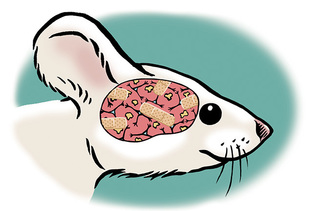 loading
loading
FindingsHelp for Alzheimer’s?For mice, a drug brought back the ability to form memories.  Gregory NemecView full imageA new drug can reverse memory problems in mice suffering from a version of Alzheimer’s disease. Yale researchers tested the ability of mice to learn the path through a water maze. Healthy mice learned the route and remembered it; mice with the disease couldn’t. But after a month of treatment with an experimental drug, a silent allosteric modulator (SAM), they could learn and remember a new route. “They got, in many tests, as good as healthy animals,” says neurology professor Stephen Strittmatter, lead investigator. “The deficits that were present were reversed.” SAM interferes with the actions of a protein called amyloid beta (Aβ), a principal villain in Alzheimer’s. Early in the course of the disease, small clusters (oligomers) of this protein accumulate in the brain and bind to a receptor called PrPC, which is present in every neuron. Thus plugged in, Aβ oligomers can transmit a damaging signal straight into the cell. The messenger that carries this destructive signal is another protein, MGluR5. SAM blocks it—and apparently allows the mice’s synapses to heal and their ability to form memories to return. Human trials could begin within two to three years. But there’s a caveat. The mouse version of Alzheimer’s lacks a key element of the human version: neuron death as the disease progresses. Even if it works in humans, SAM probably won’t revive dead brain cells. It would be most effective if given early in the disease.
The comment period has expired.
|
|